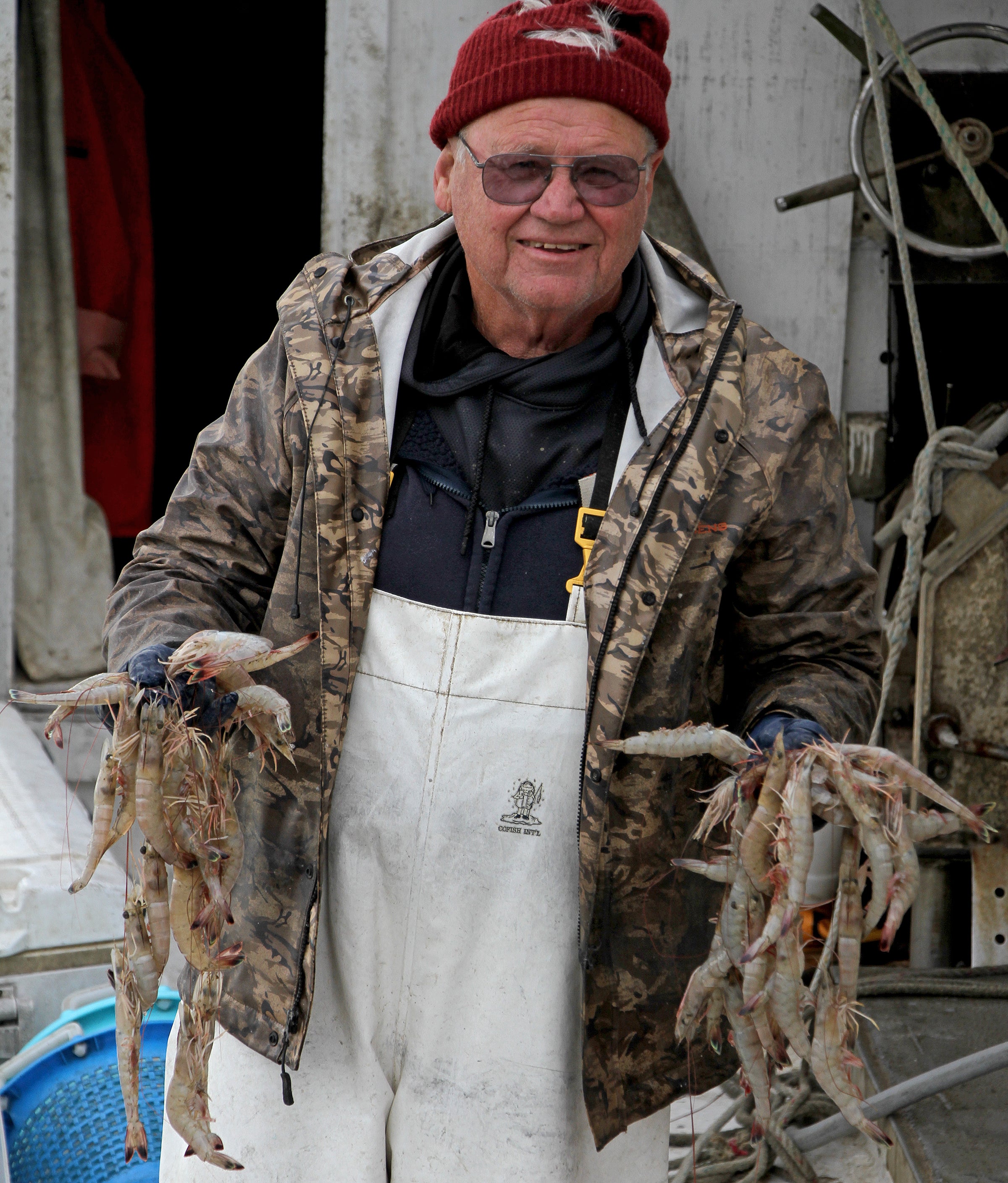By DAVID RAINER, Alabama Department of Conservation and Natural Resources
Doug Plash really can’t help himself, but you can blame it all on his roots. When he’s sitting at home on Plash Island on the banks of the Bon Secour River, the urge to head out in his boat and harvest the tasty crustaceans that are plentiful along Alabama’s Gulf Coast is overwhelming.
“There’s a boat across the river named ‘I Gotta Go,’” Plash said in the wheelhouse of his shrimp boat named after his daughters, Melissa, Jennifer and Kristi. “I probably should have named my boat that.”
Plash Island came into existence when the Intracoastal Canal was dug in the 1940s, separating the land that is surrounded by the Bon Secour River on the other sides. He is the fifth generation of Plashes to live on the island with his grandfathers buried on the island. One grandfather owned a freight company that used five schooners to haul beer from the Jax Brewery in New Orleans and hauled freight to Mobile. The semi-truck eventually left the schooners at the dock.
“The family started shrimping when the (commercial) ice machine was invented in the late 1930s,” Plash said. “No way to keep them cool before that. After they got back from World War II, they went into the shrimping business. They had an oyster business before that. A plane from Pensacola Navy Base used to come over and get oysters. They would land in the river. My grandfathers had good oysters.”
When the 69-year-old Plash was 13 years old, he was introduced to the rigors of hauling nets, followed by sorting and heading shrimp.
“That was my summer job,” Plash said. “My father (Floyd “Buck” Plash) double-rigged (one net on each side) a boat, and it seemed like we caught twice as many shrimp as everybody else. He had one net that wasn’t catching too good, but I still couldn’t keep up. I kept falling asleep in the pile of shrimp at night. We worked 48 hours straight, came home on Wednesday and went back out. I lost 30 pounds that summer. All I ate was potted meat and crackers. We didn’t have time to cook.”
Plash shrimped only during the summer. He graduated from high school and then got a bachelor’s degree in business at Troy (State) University. He interviewed for a job at a textile mill in LaGrange, Georgia, but life intervened.
“My wife got pregnant, and I went to shrimping,” he said.
Plash got his first shrimp boat in 1977 and named it the Lady Kris after his first daughter. His current vessel was built in his backyard in 1999 and 2000.
“It took about a year to finish it,” he said. “I shrimped at night and worked on the boat in the daytime. In the winter, I worked on the boat steady. I cashed my first check off that boat on April 13, 2000. I was stressed out. I had two kids in college, and everything seemed to break. I had to do everything twice.
“I remember when we first started, we would get $8 a pound for big tails. They’re way below that now.”
On a typical night, Plash deploys a 10-foot net (try net) to locate the shrimp before deploying the big nets, which are 25 feet each. He’s deployed his nets everywhere in Alabama from Perdido Bay to the Mississippi line and all the way to the head of Mobile Bay.
“What I do is pull that try net for 15-20 minutes and see how many I catch per minute,” he said. “If the catch is real good, you turn around real quick. Sometimes we have to hunt shrimp, but most times we just start dragging. I had enough cousins and uncles out shrimping that we figured out pretty quick where the shrimp were.”
During his early shrimping career, Plash made a living selling brown and white shrimp, but he thinks the completion of the Tennessee-Tombigbee Waterway in 1984 changed the shrimp ecosystem with additional flow through Mobile Bay.
“It changed the salinity,” he said. “Brown shrimp have to have salty water. We have brown shrimp in the spring, but they don’t get big enough to make any money. White shrimp prefer less salinity. They migrate in the fall, but it seems like we have two crops of them. We catch them in the spring and the fall.”








